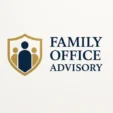Family Council & Family Assembly Structure #
The Family Council and Family Assembly are key governance bodies that formalize communication, decision-making, and engagement within multi-generational families. They provide structure, representation, and continuity—ensuring the family’s mission, values, and objectives are preserved across generations while giving every family member an appropriate forum for participation.
Context & Importance #
As families grow larger and more complex, informal communication channels often become insufficient. The Family Council and Assembly introduce an organized model that prevents misunderstandings, creates transparency, supports succession planning, and strengthens unity. These bodies also act as a bridge between the family and the family office, reducing conflicts and supporting strategic alignment.
What Is a Family Assembly? #
The Family Assembly is the broadest forum within the governance structure. It includes all adult family members and sometimes younger generations in observer roles. The Assembly promotes communication, education, and shared purpose.
- Functions: Sharing information, reviewing family office reports, discussing key decisions, and fostering family cohesion.
- Participants: All family members of legal age (and optionally next-gen observers).
- Typical activities: Annual meetings, educational workshops, updates from the family office, philanthropy planning, and family retreats.
- Decision rights: Often limited to major family-wide issues (e.g., amendments to the family charter).
What Is a Family Council? #
The Family Council is a smaller, elected or appointed group representing the broader family. It acts as the liaison between the family, the family office, and governance structures such as boards of directors and trustees.
- Composition: Representatives from each branch or generation, selected based on capability, interest, or rotation.
- Responsibilities: Decision-making, policy development, conflict resolution, oversight of family office priorities, and communication management.
- Committees: Many councils use working groups for education, investment oversight, philanthropy, and next-gen development.
- Meeting frequency: Typically quarterly or monthly, depending on complexity.
Roles & Responsibilities #
Clear definitions prevent role confusion and ensure smooth functioning of both the Assembly and the Council.
- Family Assembly:
- Engage in general discussions and share viewpoints.
- Receive updates about family assets and activities.
- Participate in voting on major family decisions.
- Promote unity and communication across generations.
- Family Council:
- Draft governance policies and the family constitution.
- Manage communication between generations and branches.
- Oversee succession planning and next-gen education programs.
- Act as the point of escalation for conflicts.
- Coordinate with the family office on strategic matters.
Implementation & Best Practices #
- Create a Family Charter: Establish mission, values, roles, meeting schedules, and decision-making rules.
- Define membership criteria: Clarify age requirements, participation expectations, and rotation rules.
- Establish election processes: Use transparent procedures for selecting Family Council representatives.
- Provide training: Prepare council members in governance, communication, and leadership.
- Use structured agendas: Ensure efficient, productive meetings.
- Document everything: Minutes, resolutions, and policy updates.
- Foster inclusivity: Ensure all family voices are heard, even when not directly represented.
- Evaluate regularly: Review performance and adapt the structure as the family grows.
Common Challenges #
- Lack of engagement from family members.
- Representation imbalances between branches or generations.
- Unclear decision-making authority leading to confusion.
- Difficulty managing conflict or sensitive issues.
- Overly complex structures unsuited for smaller families.
- Insufficient communication between Council and Assembly.
See Also #
- Family Governance
- Family Constitution / Charter
- Family Communication Protocols
- Next-Gen Education & Leadership Programs
- Succession Planning




